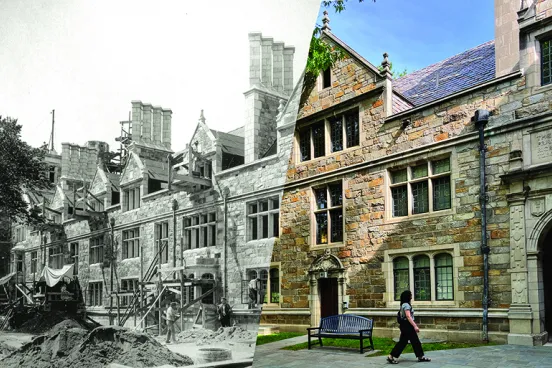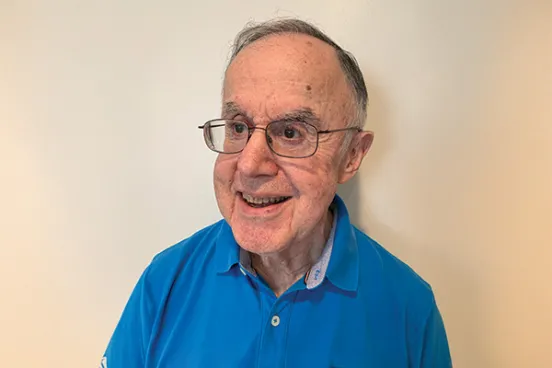
From a young age, Nat Pernick, ’86, has had a propensity for mathematics and science. Little did he know this interest would pave the way for his future in computers and medicine, which was only a distant concept back in law school. Today, he is the founder of PathologyOutlines.com Inc., a digital pathology textbook that provides free technical information for pathologists.
Pernick recently gave $100,000 to Michigan Law to establish a scholarship fund that will support students interested in the intersection of law and medicine. “I had a lot of people help me; a lot of people gave me advice and steered me the right way,” he says. “I’m grateful and happy to give back to the Law School.”
In high school, Pernick was first exposed to computer technology and learned basic coding on a programmable calculator and early computer terminal. He became proficient enough that, during his senior year, he took a job as a computer programmer for Wang Laboratories.
He received his undergraduate degree in mathematics from Wayne State University and then pursued a medical degree at the University of Michigan. In his final year of medical school, Pernick found a niche he enjoyed.
“I took a rotation for two or three months at the National Institutes of Health on computers and medicine,” he recalls. “I decided that’s what I wanted to do, but there was no real program to enter; no residencies existed yet.”
After graduation, in lieu of being matched with a residency, Pernick decided law school was the next step in his academic career. He saw law school as an opportunity to gain extra knowledge that would add value to his career when advances in computers and medicine gained prominence. Not ready to say farewell to the Wolverines, he enrolled at Michigan Law.
Nat Pernick, ’86I believe if you want medical practitioners to do a good job, you have to make the information readily available.
Leading into Pernick’s first-term exams, he felt compelled to conduct a self-examination on a swollen lymph node he had previously found during medical school. Originally diagnosed as benign, it was now a golf ball-sized malignant mass. He underwent four months of radiation therapy during the second term of law school, and the tumors disappeared.
“When I graduated from Michigan Law, I was emotional because I didn’t think I would be alive to do so,” remembers Pernick. “Law school—in a nontraditional way—was a major part of my life.”
With relief and hope for what lay ahead, Pernick went on to clerk for Honigman Miller Schwartz and Cohn LLP in Detroit for the summer before opening a private practice in Bingham Farms, Michigan. In his practice, he specialized in commercial litigation and collections.
In the mid-1990s, Pernick decided the time was right to reenter medicine. He started a four-year pathology residency program through Wayne State University and the Detroit Medical Center while continuing to run his legal practice. He then entered a surgical pathology and research fellowship with Harper University Hospital in 1999.
During his residency and fellowship, Pernick noticed a lack of easily accessible medical information for training and practicing pathologists. “I realized that medicine is hard to do, but getting information should not be hard,” he says.
In 2001, Pernick founded PathologyOutlines to bring the latest and most accurate findings in the pathology field to medical practitioners. He balanced running his private legal practice with developing the company for its first eight years; in 2009, he began working solely on the website.
Today, PathologyOutlines has expanded, covering more than 4,500 topics using text, images, and links. The site has more than 300 active authors and an editorial board with more than 60 academics. The website and its resources are free for users, and the costs are covered through paid advertisements.
“I believe if you want medical practitioners to do a good job, you have to make the information readily available,” says Pernick. “So, even though our job is often to represent health care providers, which many lawyers do, ultimately, our work should benefit patients.”







